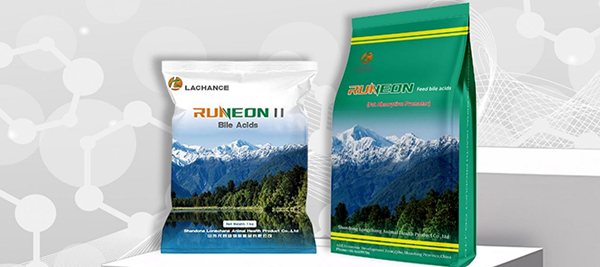Chenodeoxycholic Acid — Effects on the Hepatic Inflammatory Response in Laying Hens with Fatty Liver Hemorrhagic Syndrome
Fatty Liver Hemorrhagic Syndrome (FLHS) in laying hens is one of the most common nutritional metabolic diseases in modern intensive layer farming. It is primarily characterized by significant fatty degeneration, enlargement, and hemorrhage of the liver. In severe cases, the incidence rate can reach 30%, and it can also lead to a sharp decline in the egg production rate, causing significant economic losses to the layer industry.

Pathologically, FLHS in laying hens is similar to Non-Alcoholic Fatty Liver Disease (NAFLD) in humans, and its symptoms are more closely aligned with the second stage of NAFLD, namely Non-Alcoholic Steatohepatitis (NASH). The "two-hit" hypothesis is widely accepted in its pathogenesis. An excessive inflammatory response, caused by an imbalance in M1/M2 polarization of hepatic macrophages (mainly Kupffer cells, KCs), is considered a key factor in the occurrence and development of NASH.
Previous studies and our group's research have demonstrated that bile acids are involved in regulating hepatic glucose and lipid metabolism, inflammatory responses, drug metabolism, and detoxification. Abnormal bile acid metabolism is a significant feature of chronic liver diseases like NAFLD/NASH. Macrophages primarily express the bile acid receptor TGR5, and the TGR5 signaling pathway is involved in regulating macrophage polarization-mediated inflammatory responses. Feeding Chenodeoxycholic Acid (CDCA) can prevent the occurrence of FLHS in laying hens and alleviate hepatic inflammatory damage. Based on this, our group hypothesizes that CDCA's regulation of hepatic macrophage M1/M2 polarization-mediated inflammatory responses via the TGR5 signaling pathway may be one of the important mechanisms by which it prevents FLHS in laying hens.
Objective▼
This study aimed to investigate the effect of CDCA on macrophage polarization-mediated inflammatory responses in the livers of laying hens with FLHS by prophylactically administering CDCA while establishing an FLHS model. The goal was to provide a theoretical basis for using CDCA to prevent FLHS in laying hens.
Methods▼
Laying hens at 38 weeks of age (peak laying period) were selected and randomly divided into 4 groups: Normal control group (Group W), CDCA control group (Group WC), FLHS model group (Group M), and CDCA intervention group (Group MC). Serum and liver tissues were collected. Techniques such as ELISA, quantitative real-time PCR, and Western blot were used to assess liver structure and function, macrophage M1/M2 polarization, the TGR5 signaling pathway, and factors related to bile acid production and metabolism.
Results▼
1. Liver in the MC group showed a healthy state, being smooth and dark red in texture, with significantly reduced lipid vacuoles in hepatocytes and significantly decreased serum ALT and AST activities. This indicates that CDCA intervention can improve liver structure and function in FLHS laying hens.
2. In the MC group, the levels of M1 macrophage polarization markers (TNF-α, iNOS, IL-1β) in liver tissue were significantly decreased, and the mRNA expression levels of STAT1, IRF5, and SOCS3 in the JAK-STAT1 signaling pathway were significantly downregulated. This indicates that CDCA can inhibit the M1 macrophage polarization-mediated pro-inflammatory response by suppressing the JAK-STAT1 signaling pathway.
3. In the MC group, the expression levels of M2 macrophage polarization markers (CD206, CD163, TGF-β, IL-10) were significantly increased, and the mRNA expression levels of IRF4, PPAR-γ, STAT6, and SOCS2 in the JAK-STAT6 signaling pathway were significantly upregulated. This indicates that CDCA can promote the M2 macrophage polarization-mediated anti-inflammatory response by activating the JAK-STAT6 signaling pathway.
4. In the MC group, the expression levels of TGR5, AC, cAMP, PKA, CREB, AKT, and mTOR in liver tissue were significantly increased, while the expression levels of NF-κB and NLRP3 were significantly decreased. This indicates that CDCA can exert its anti-inflammatory effects by upregulating TGR5 expression, thereby activating the PKA-CREB and AKT-mTOR pathways and inhibiting the PKA-NF-κB/NLRP3 pathway.
5. In the MC group, serum total bile acid levels were significantly decreased, the mRNA expression levels of FXR and SHP in liver tissue were significantly increased, and the mRNA expression levels of CYP7A1, CYP7B1, and CYP27A1 were significantly downregulated. This indicates that CDCA can reduce total bile acid content by activating the FXR-SHP signaling pathway, a mechanism involving the inhibition of both the classical and alternative bile acid synthesis pathways.
6. In the MC group, the contents of TCDCA, ACA, CA, and TαMCA in liver tissue were significantly increased, indicating that CDCA's amelioration of liver injury in FLHS laying hens is closely related to promoting the generation of TCDCA, ACA, CA, and TαMCA.
Conclusion▼
Prophylactic application of CDCA can activate the TGR5 signaling pathway, inhibit the M1 macrophage polarization-mediated pro-inflammatory response, and promote the M2 macrophage polarization-mediated anti-inflammatory response in the livers of laying hens with FLHS.
Source: Yang Ruili. Effects of Chenodeoxycholic Acid on Hepatic Inflammatory Response in Laying Hens with Fatty Liver Hemorrhagic Syndrome [D]. Shenyang Agricultural University, 2024. DOI:10.27327/d.cnki.gshnu.2024.001519.










